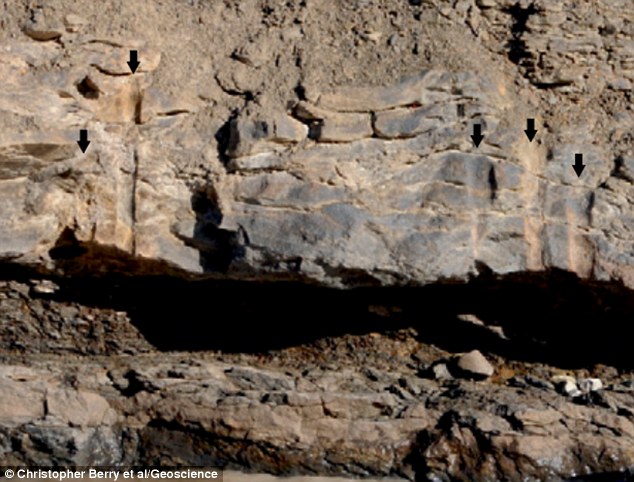This link was sent in by Gary. Apparently, some scientists have discovered a huge fossil forest buried in deep sediments and preserved intact that goes back to the Devonian period (400 million years ago) when they dug a hole for the Global Seed Vault on Svalbad (Spitzbergen), a secure underground frozen seed bank in which plants are preserved in case of a future loss of diversity. This was supposed to be part of the Eden Project in Cornwall but that has developed into a giant tourist fly trap. The article can be found at www.sciencedaily.com/releases/2015/11/151119103544.htm and is derived from the journal Geology (November, 2015) and the press release comes from Cardiff University.
The fossil forest was formed when Svalbad was at the equator, and has moved into the Arctic circle as a result of drift (or Plate Tectonics in modern jargon). Another fossil forest of nearly the same period was found in up-state New York, the Gilboa forest. The trees at this location differed, indicating it was situated in a more temperate zone of climate (some 30 degrees south of the equator). The Svalbad forest is notable as it was wholly composed of lycopods (tree ferns) all growing very densely and close together. These general grow in tropical zones. The article then goes on to elaborate on the nature of the lycopod forest, and the size of the trees, giants in comparison with modern forms of tree fern. They claim that being so dense and big they must have sucked up a lot of co2 and go on to speculate this eventually caused a dramatic drop in global temperatures (even though the forest was buried as a result of a catastrophe of some kind).
It seems uniformitarian geologists have fallen head over heels in love with the idea of co2 warming the climate, relying we may suppose on the obsession of climate scientists with co2 and assuming there is truth in the physics and this is capable of explaining the big picture of geological change. At www.dailymail.co.uk/sciencetech/article-3325616/Fossilised-FOREST-Norway… … the emphasis, for some reason, is on the obligatory hand waving to CAGW, which takes some of the lustre from the story. We do learn that tree ferns or lycopods are the tropical trees that grew in swamps and are the main source of coal seams around the world. This indicates Britain, with its large beds of coal, was also situated in an equatorial region during the Carboniferous – but whether there were massive swamps is another matter. Coal too has a catastrophic origin but uniformitarianism is basically a denial of such a situation, and the Daily Mail journalist is clearly more interested in the upcoming bean feast than in reality.

The Daily Mail piece includes a box insertion about another recent paper, written by earth scientists at Vanderbilt University, also involving some cartwheels. Some 540 million years ago, we are told, microbes ruled the roost – but many of these small creatures were wiped out in a mass extinction event (microbe and mass transcribed adjacent to each other) – but complex life was able to evolve. It seems most microbes were allergic to oxygen but those microbes that survived went on to use oxygen as an energy source and subsequently they developed into more complex forms of life. Oxygen, we are led to believe, was the world's first pollutant (in Daily Mail thinking) so we have a double whammy here, oxygen and co2, both important to life on earth, branded as pollutants.
Bill Thompson sent in a link to the first story too – http://news.discovery.com/earth/scientists-fossil-forest-discovered-in-t… … which is another report based on the university press release. We are told the trees grew to 13 feet in height. As for the mass extinction event we are only told that co2 was high (as in the Science Daily version). Dense forests of lycopods would be sucking in lots of co2, we may imagine. However, dead and dying tree ferns would have been recycling co2 into the atmosphere in a swings and roundabouts situation. They need to have another look for the sudden onset of cold global weather.
